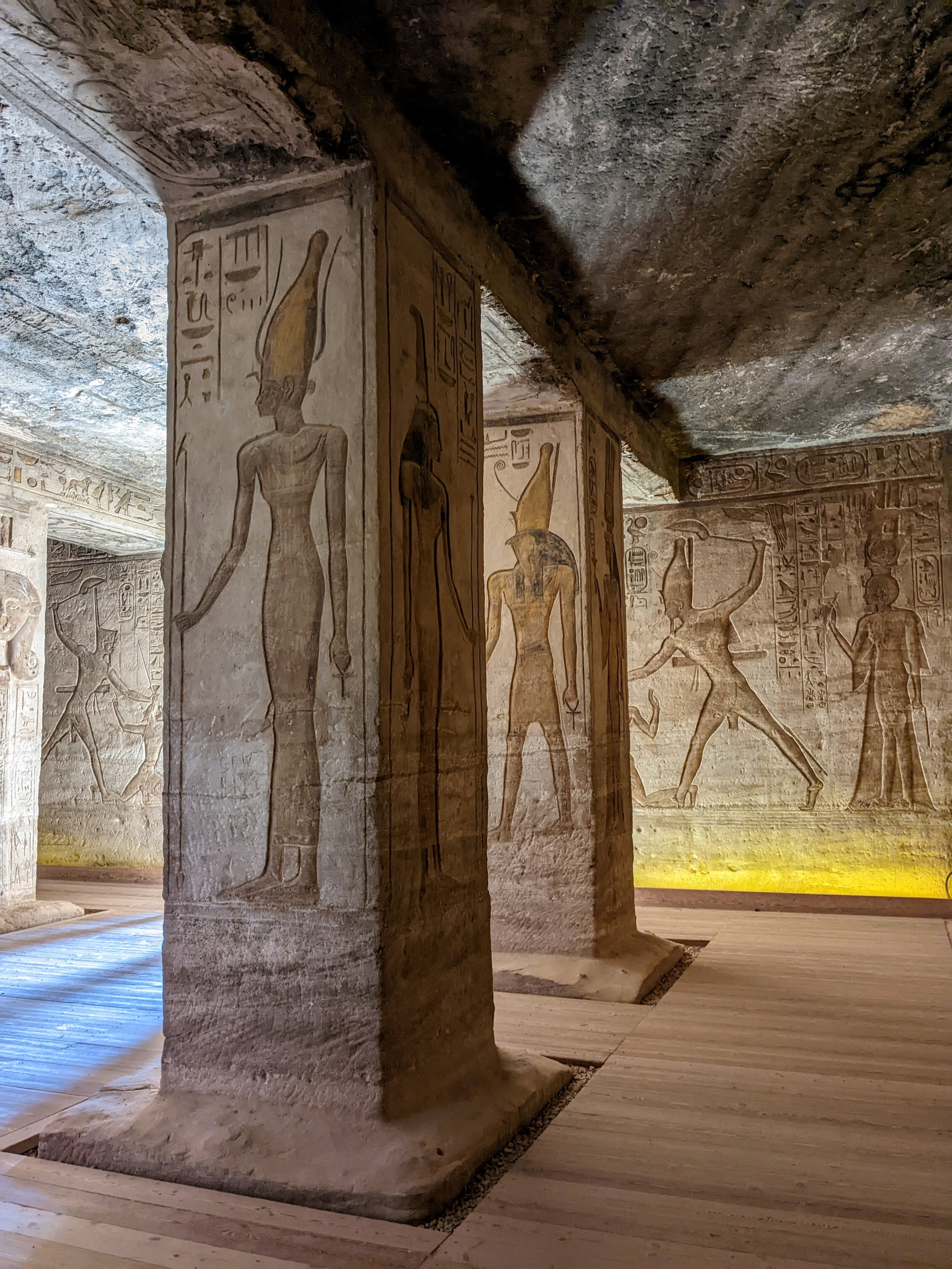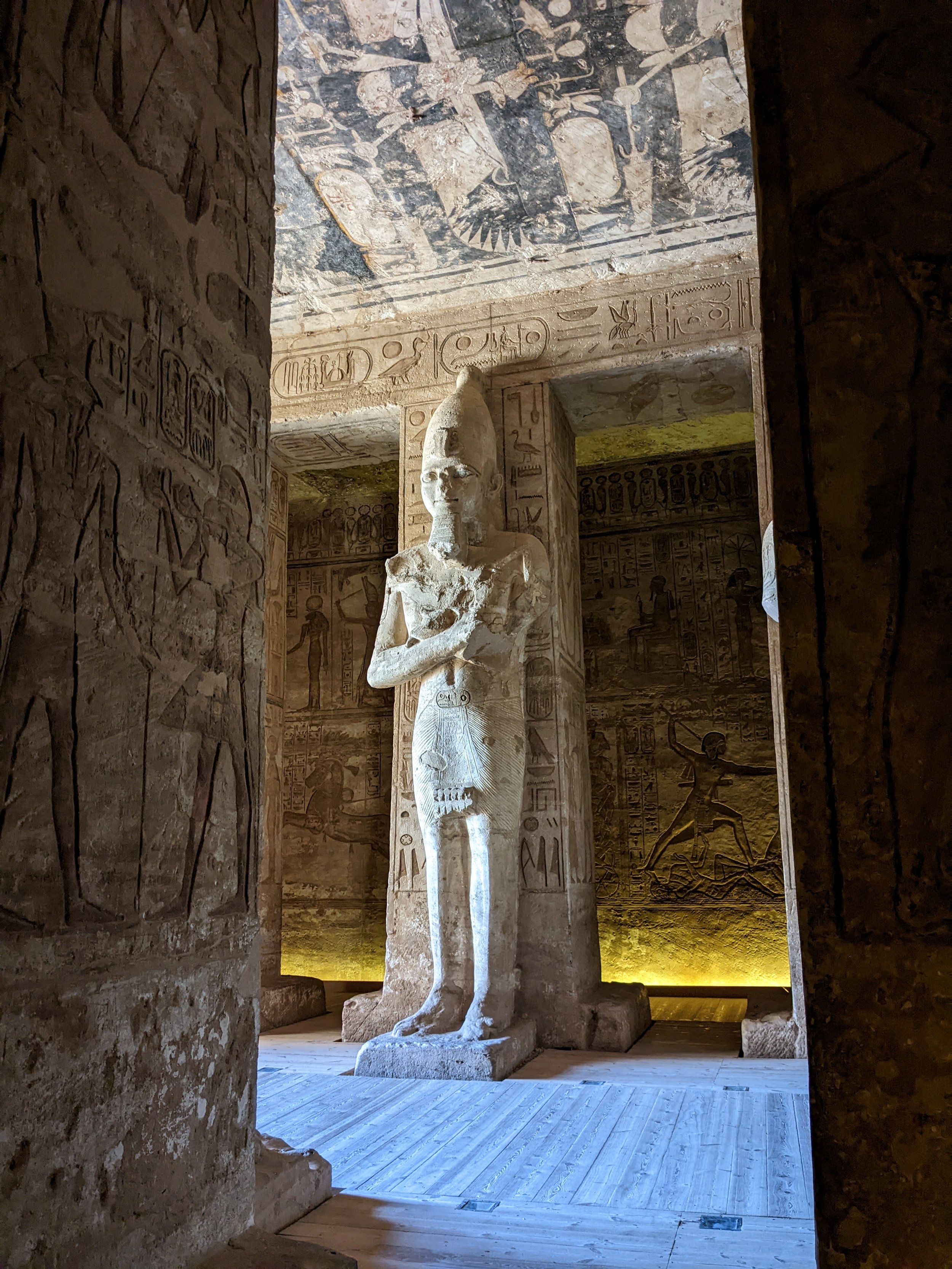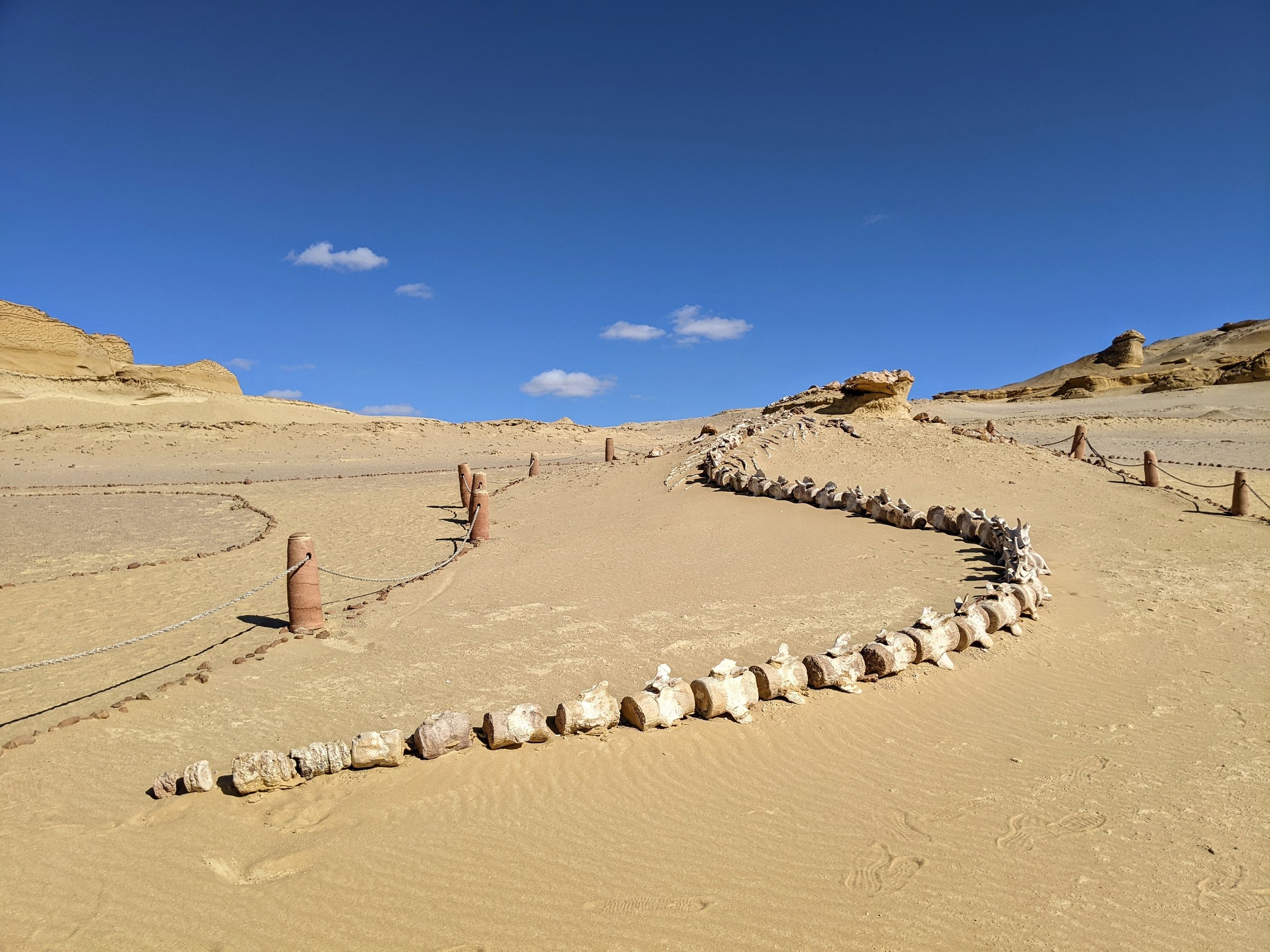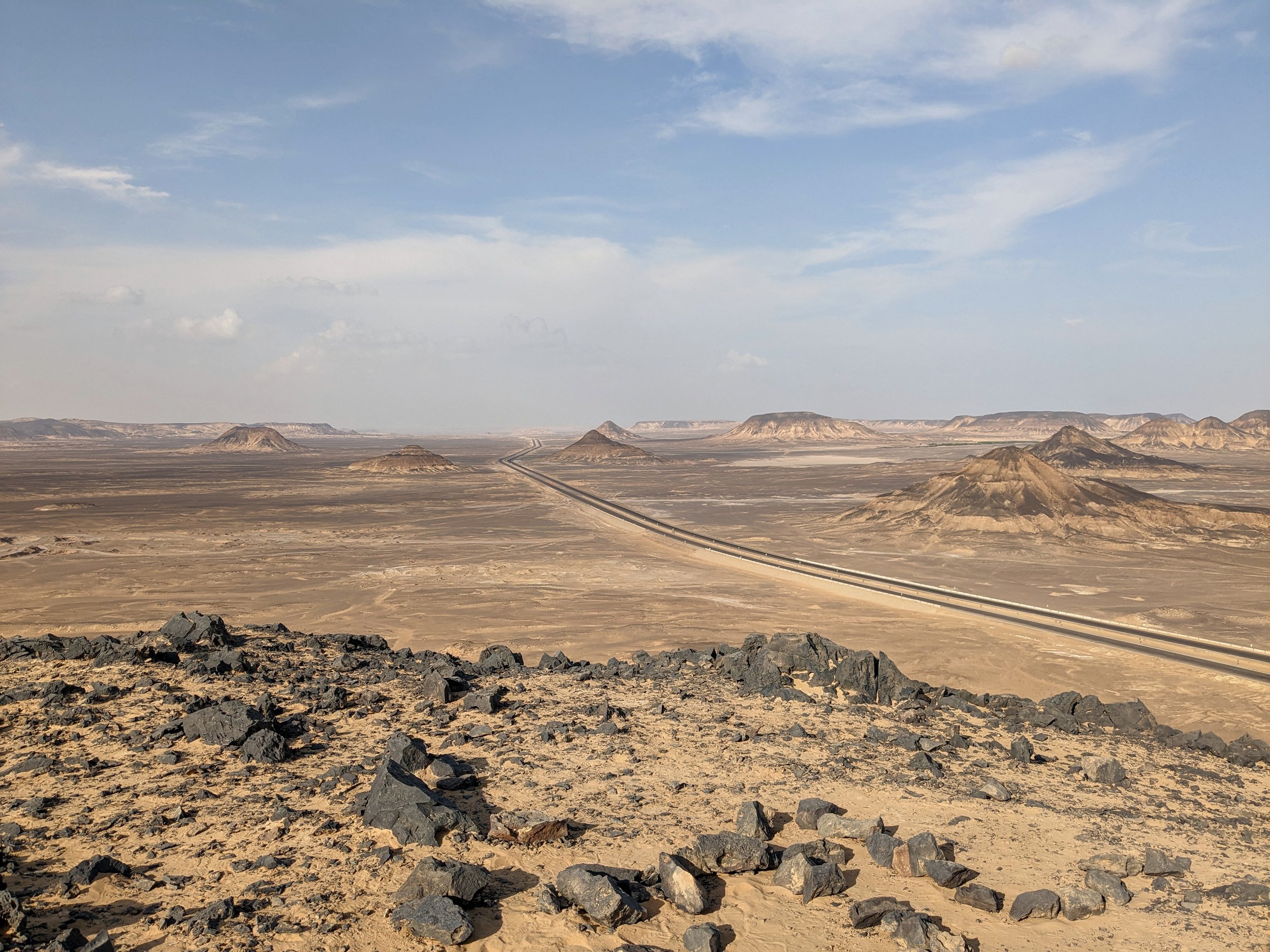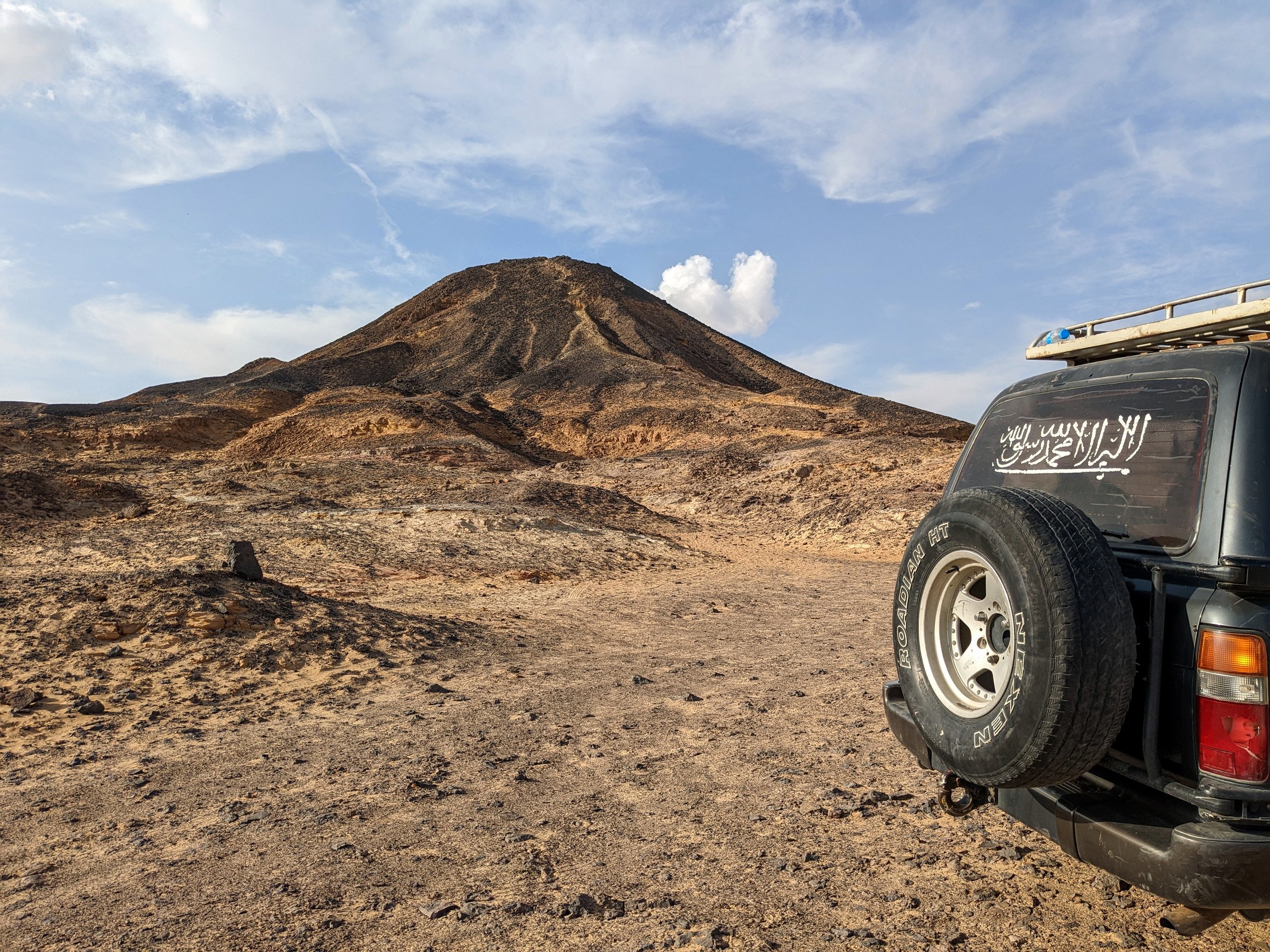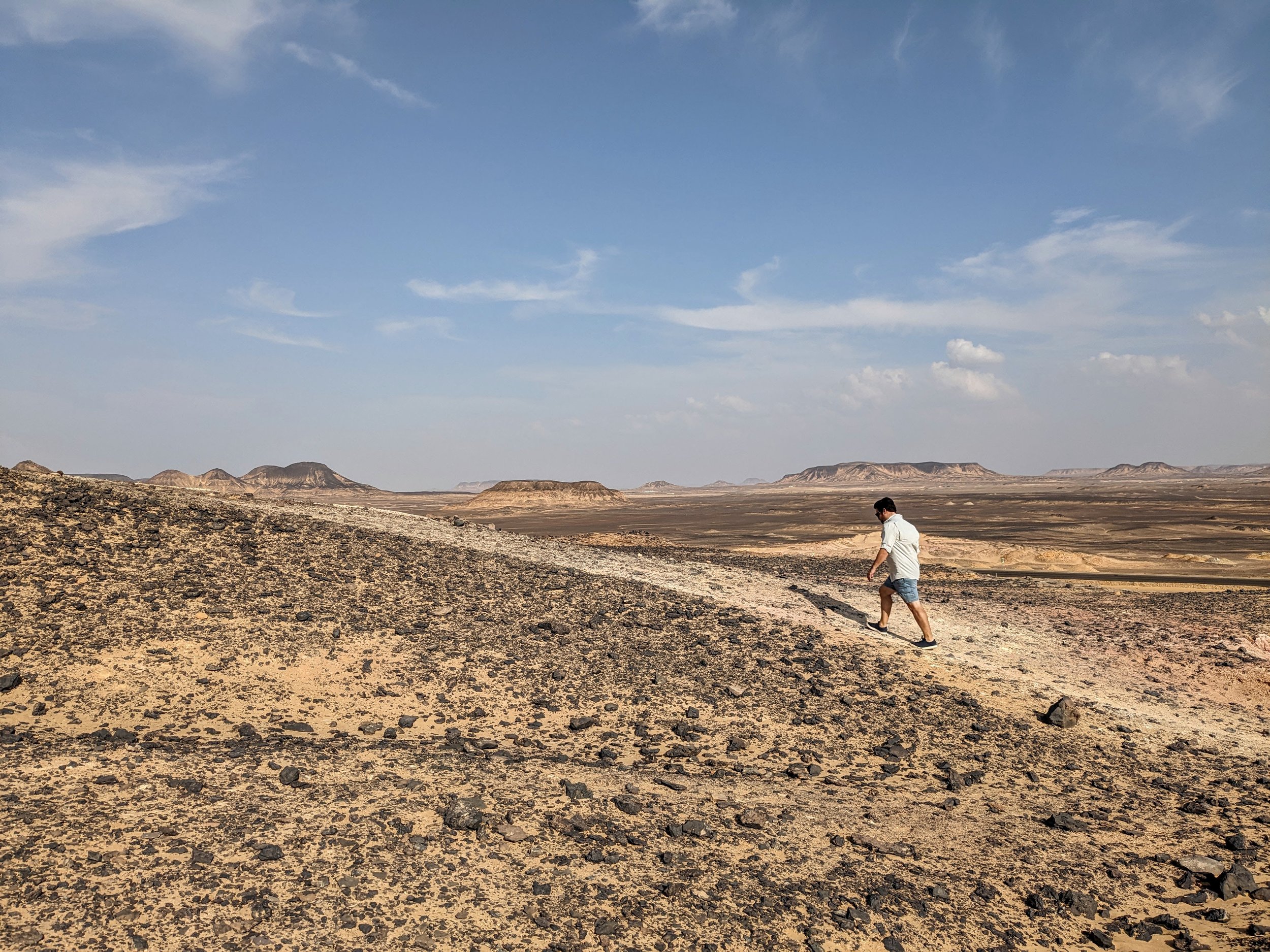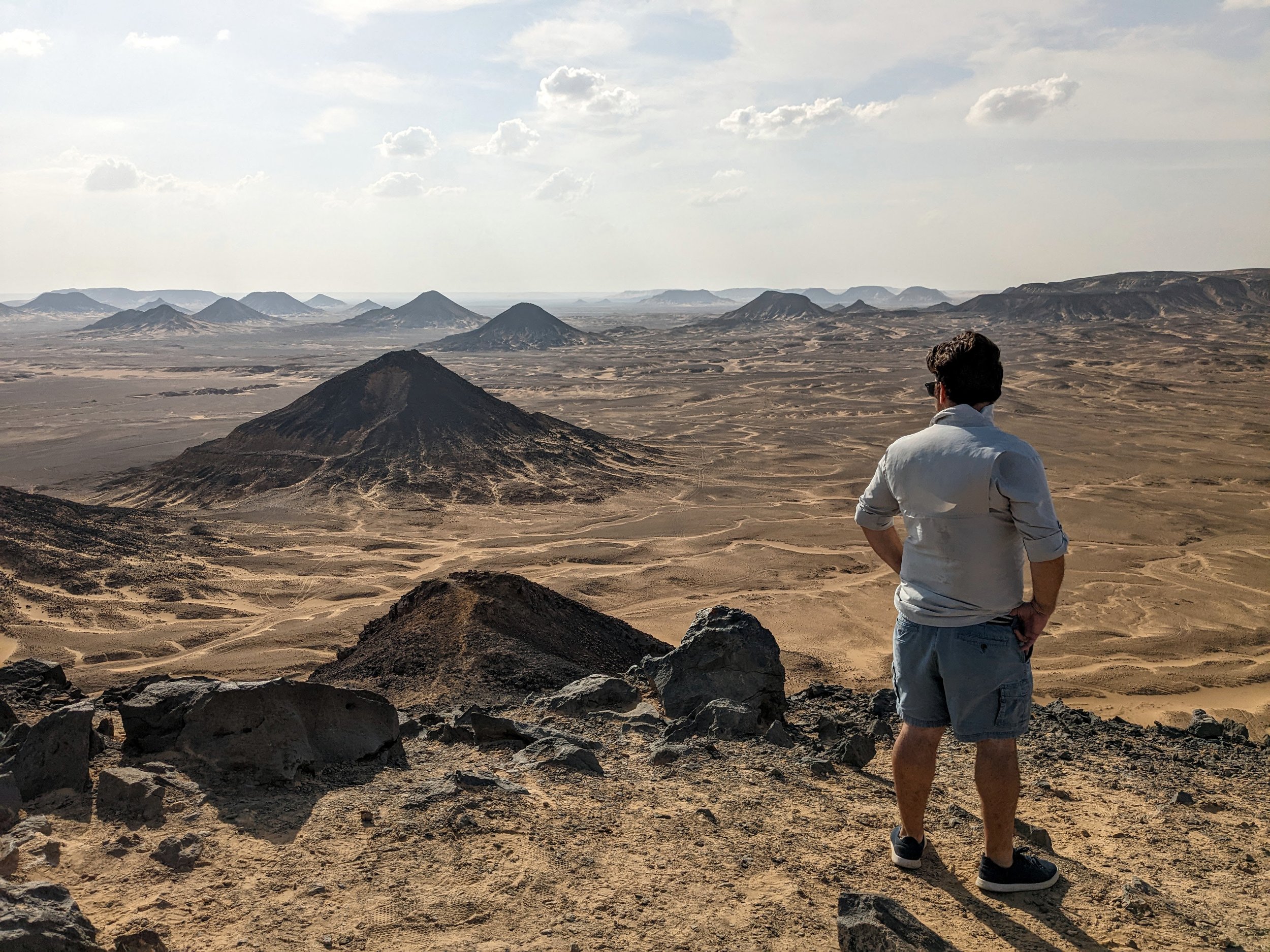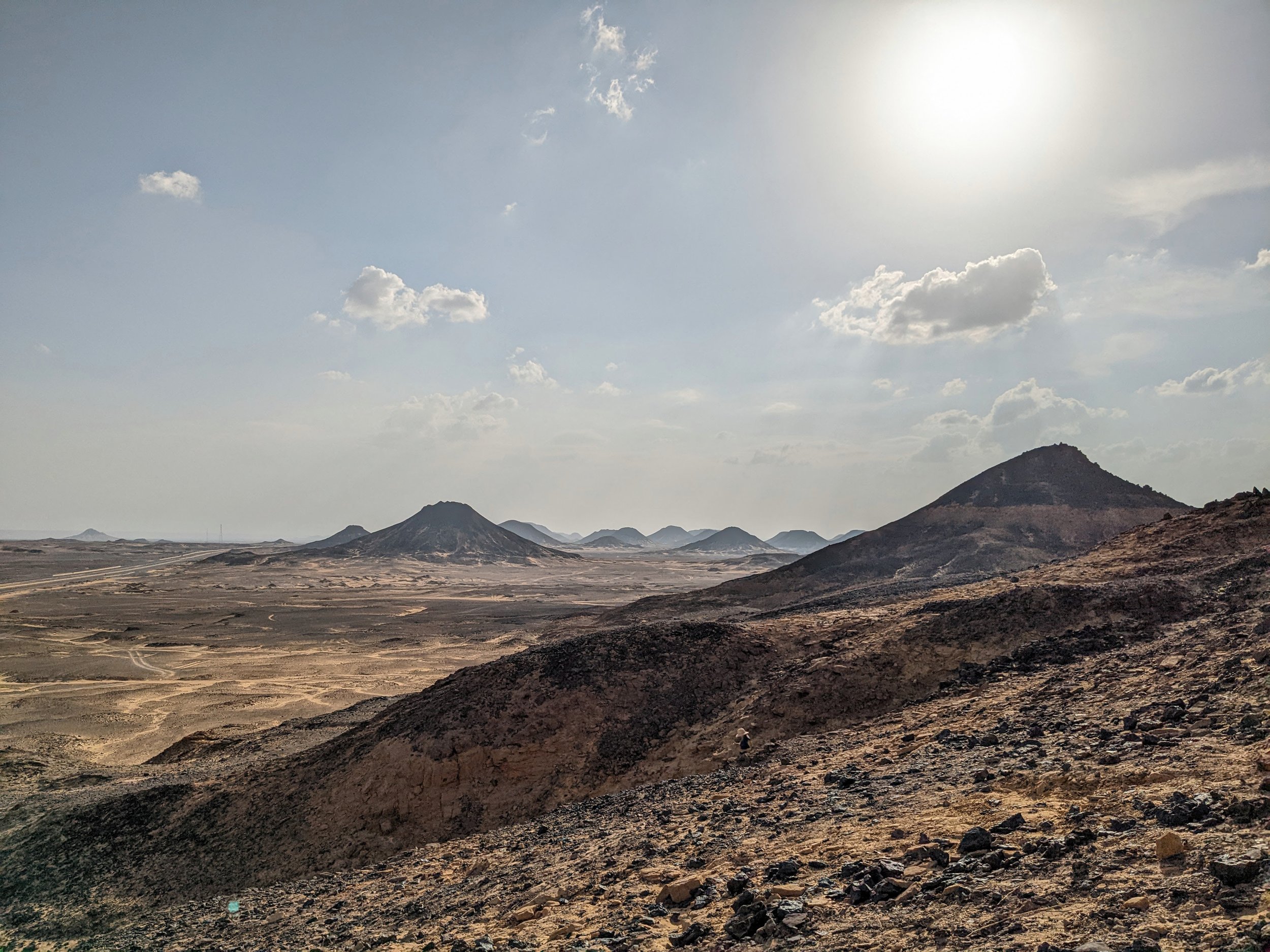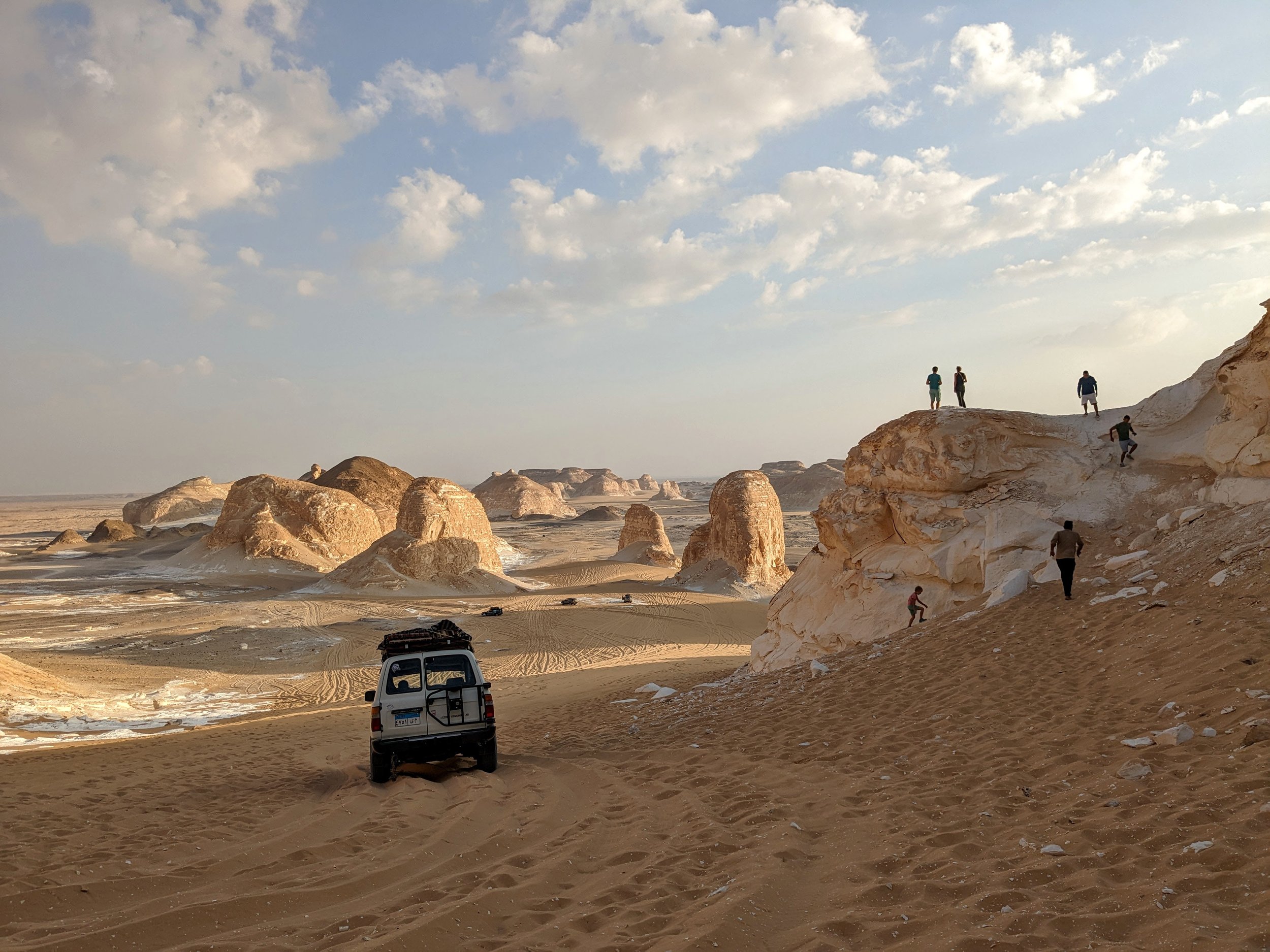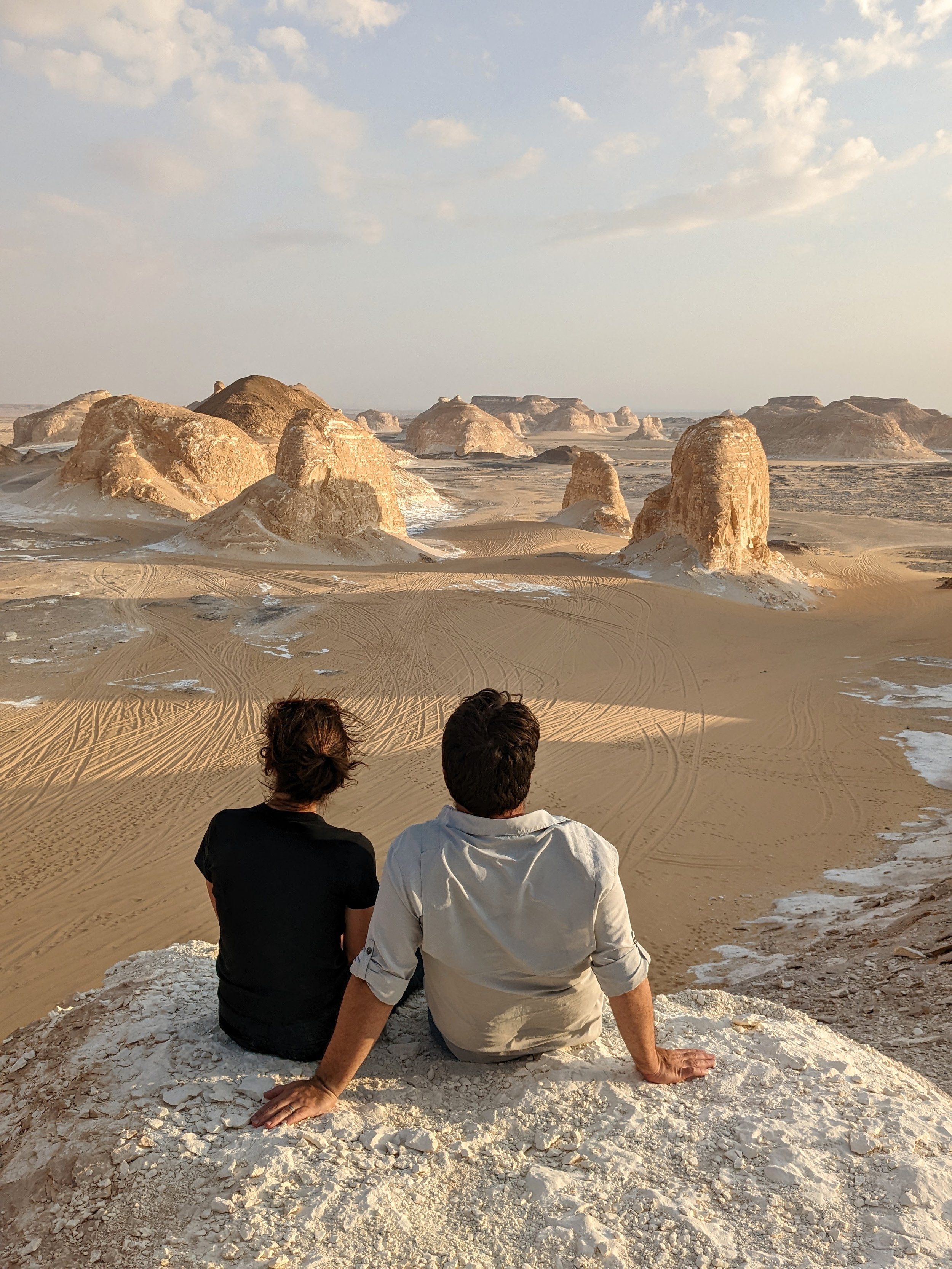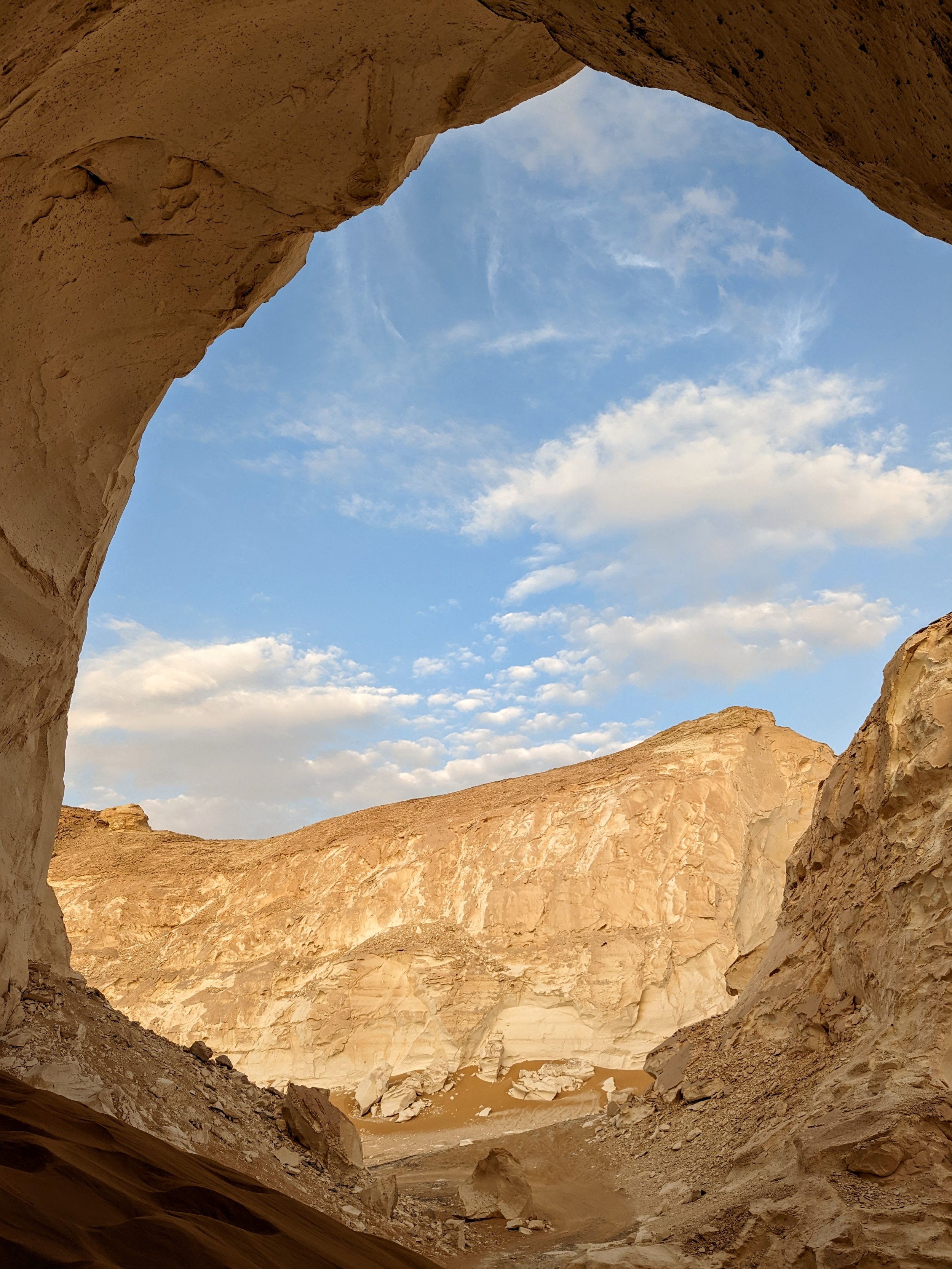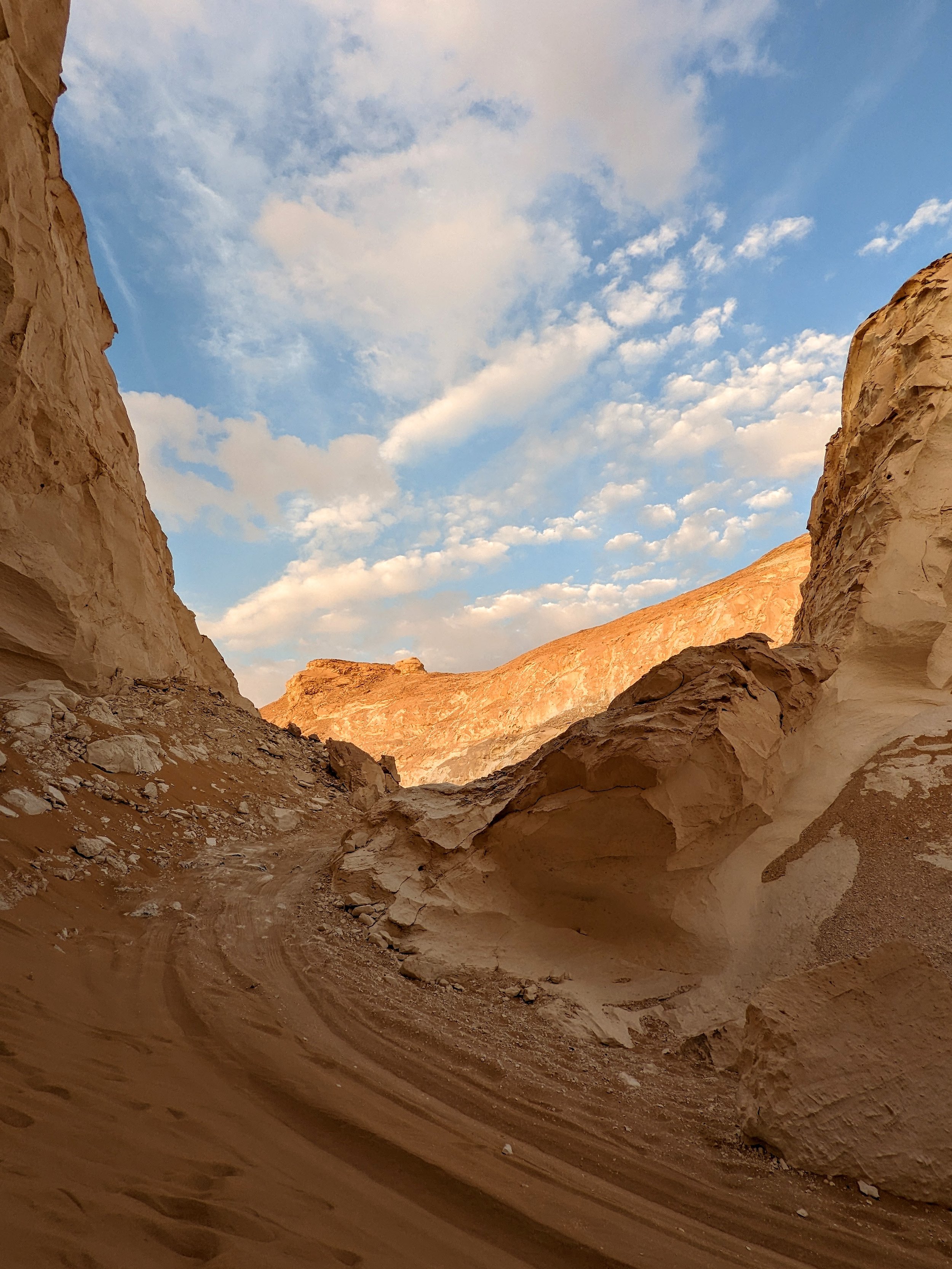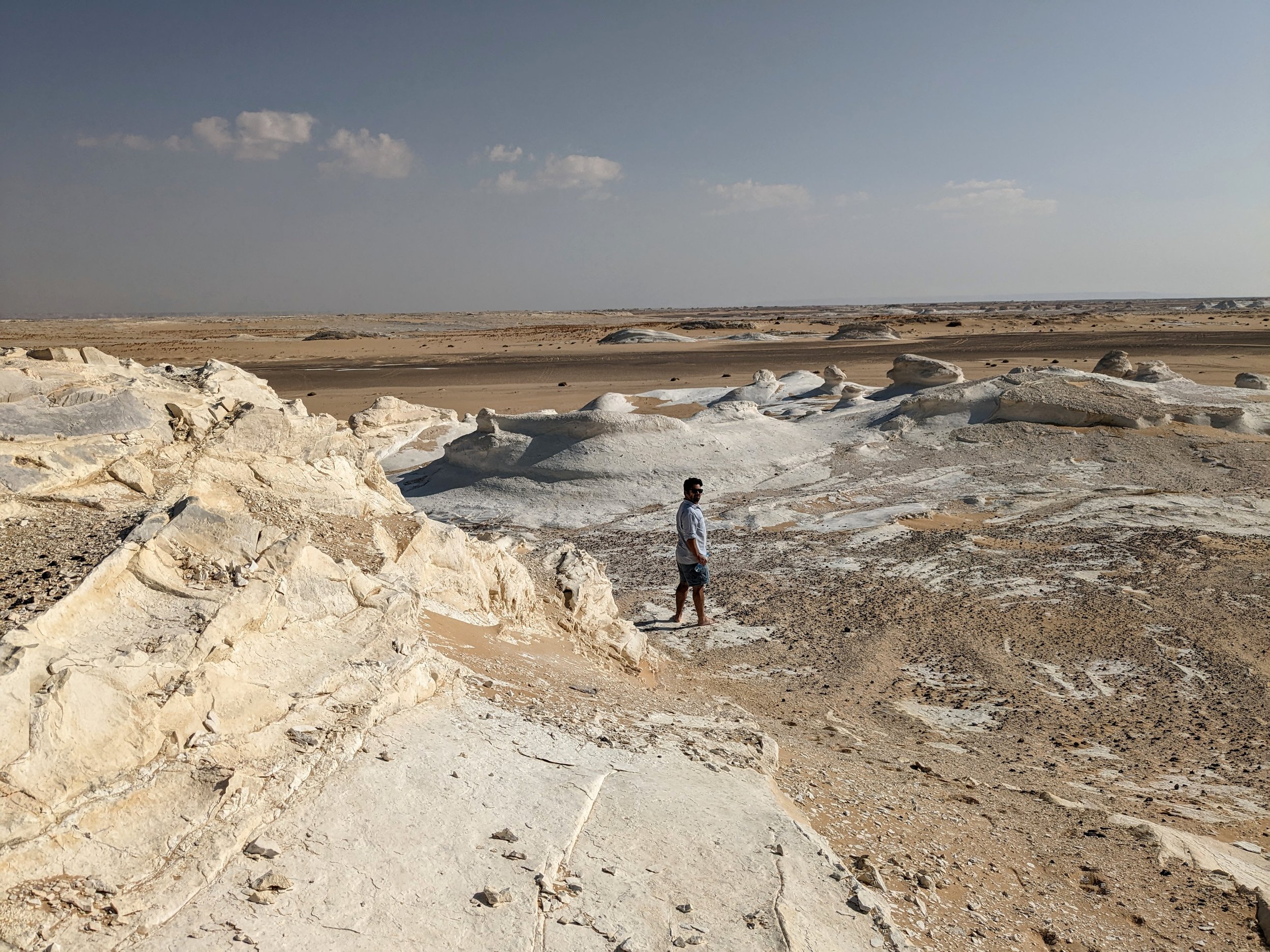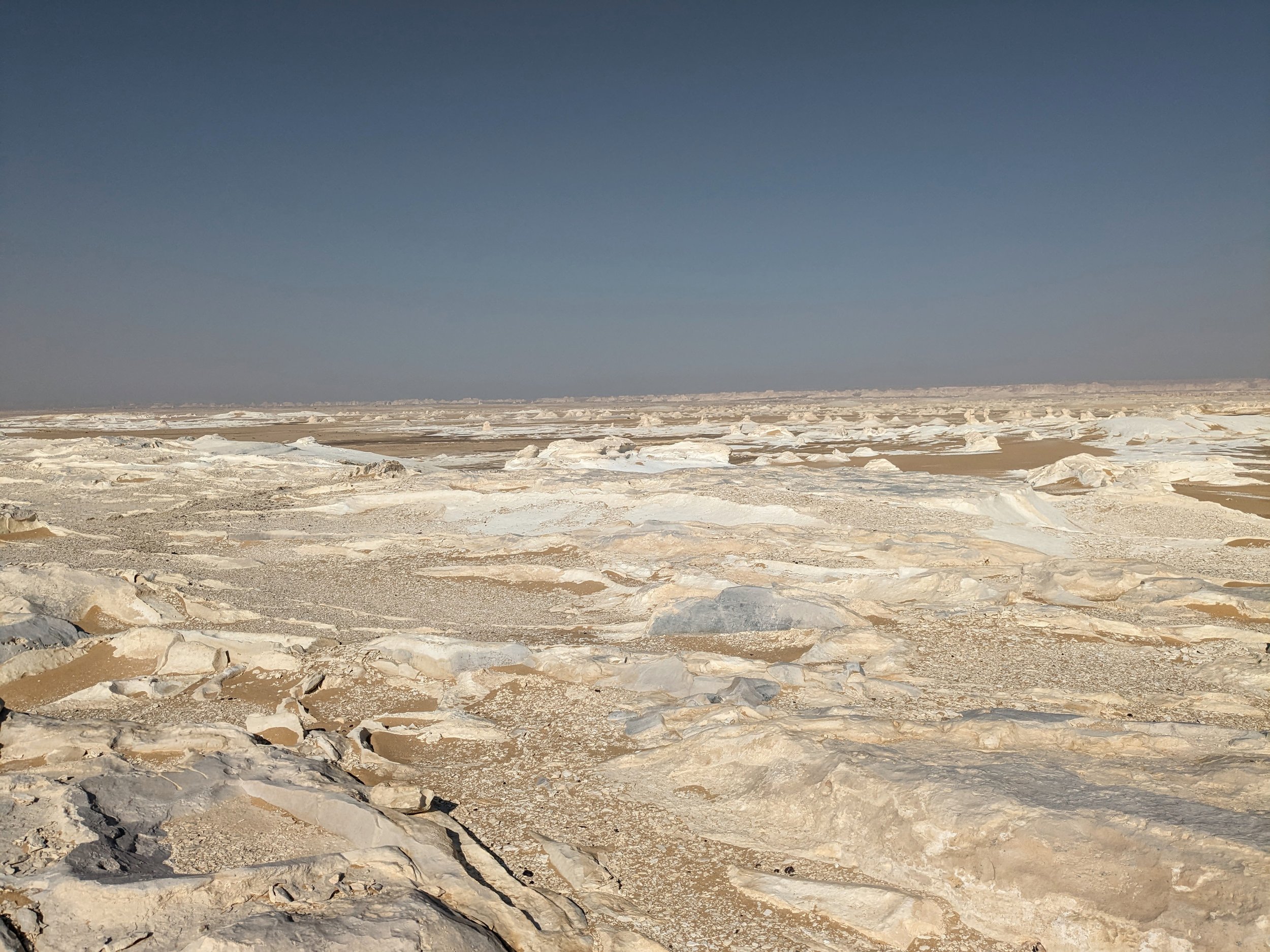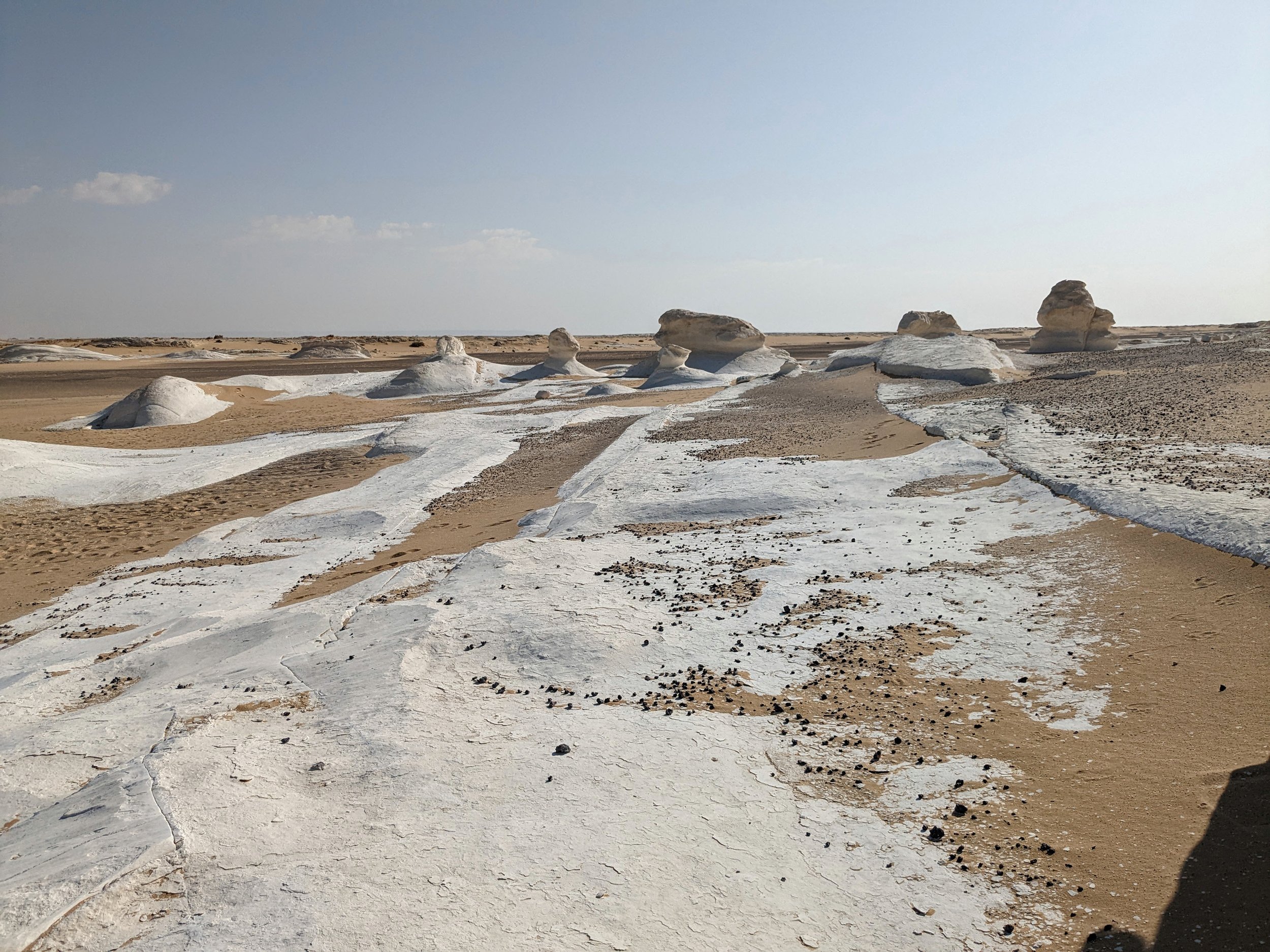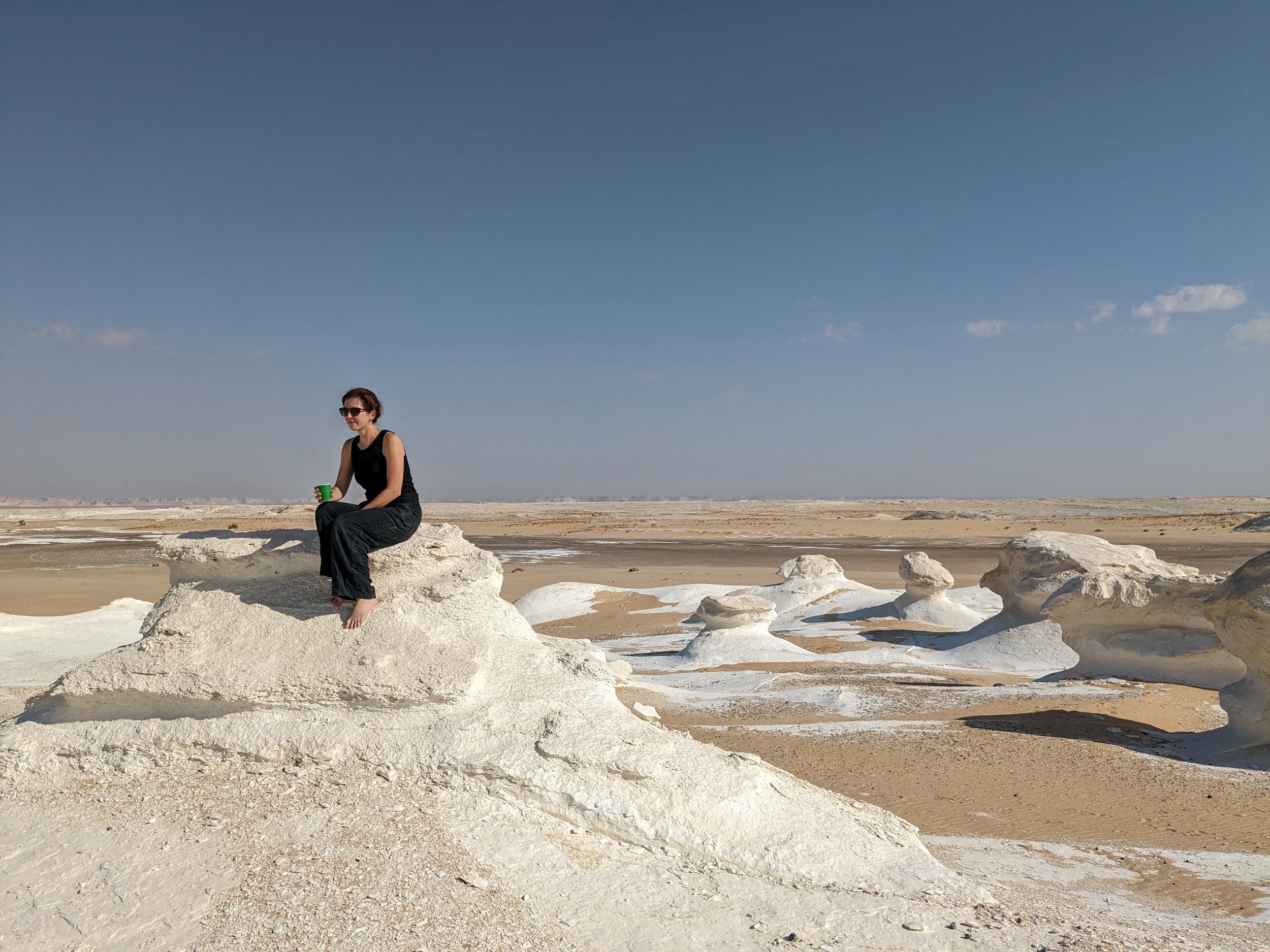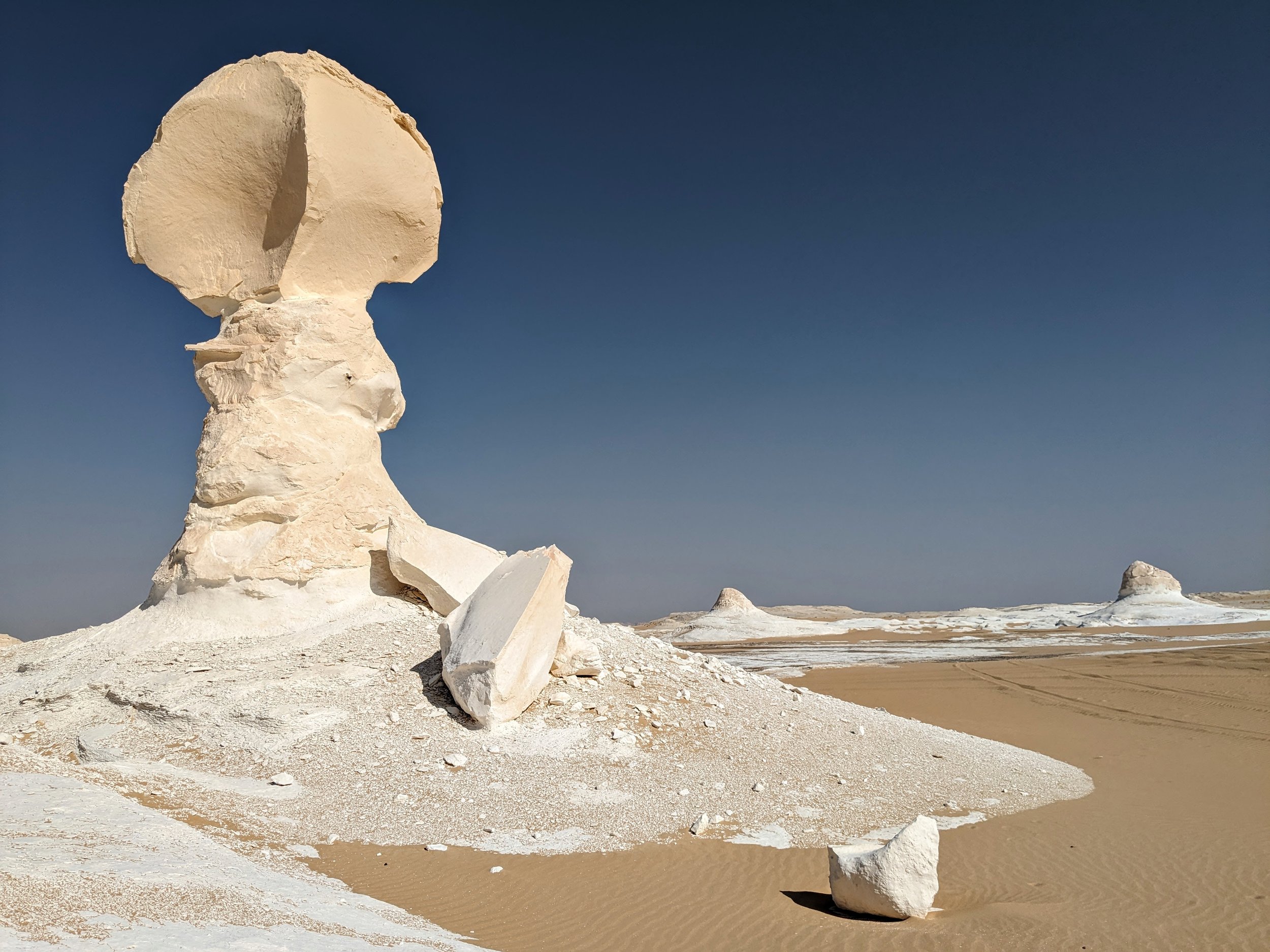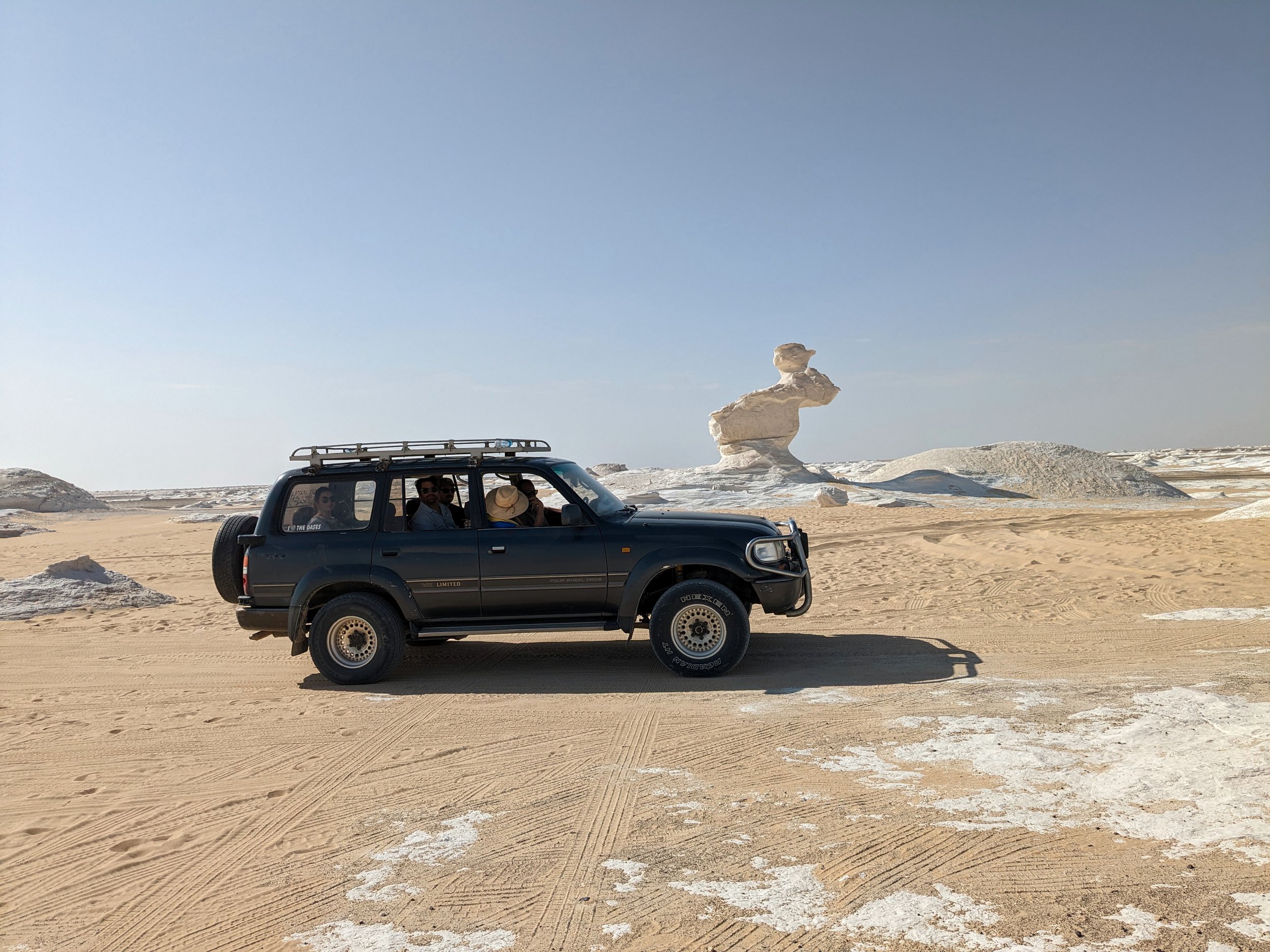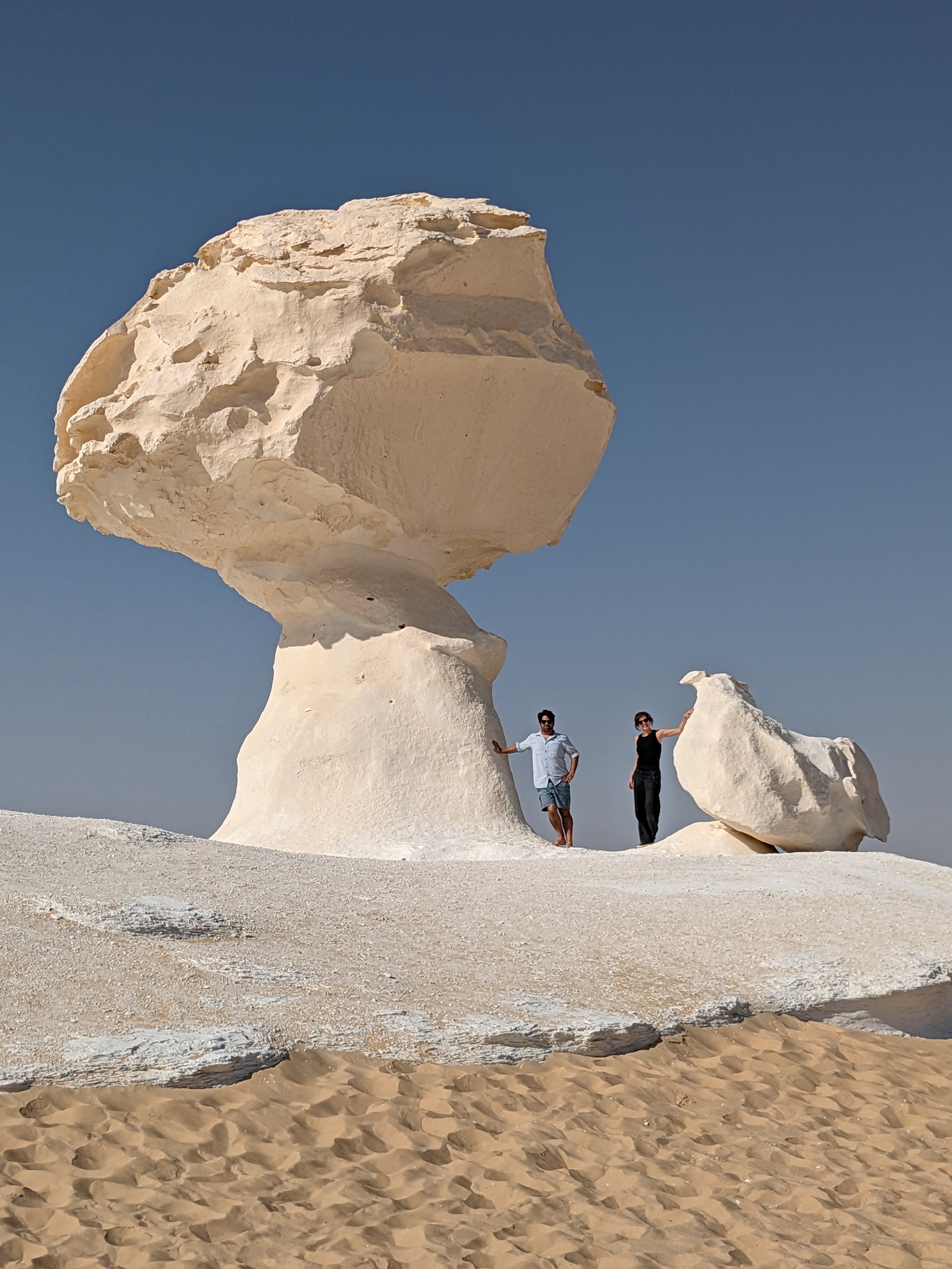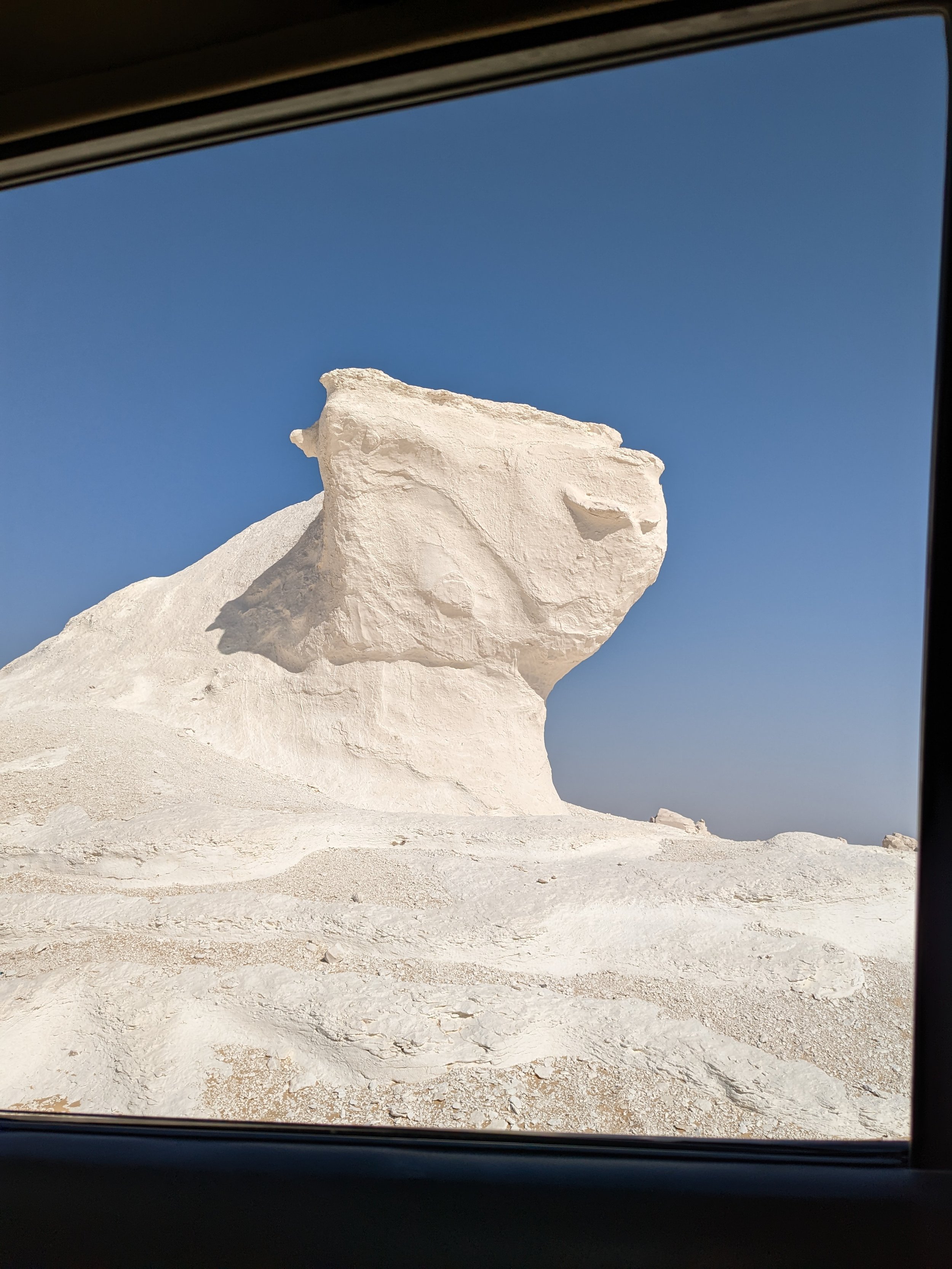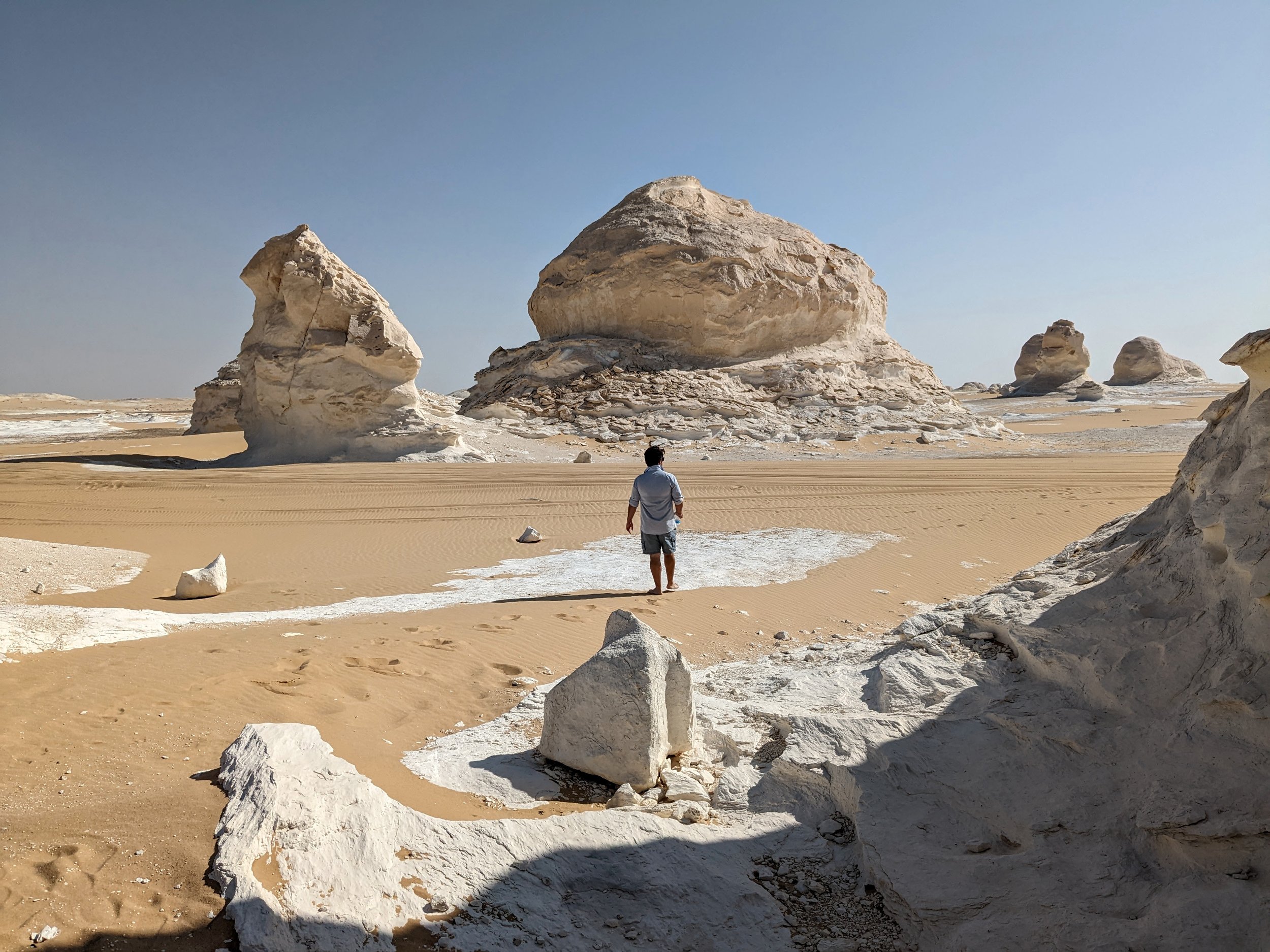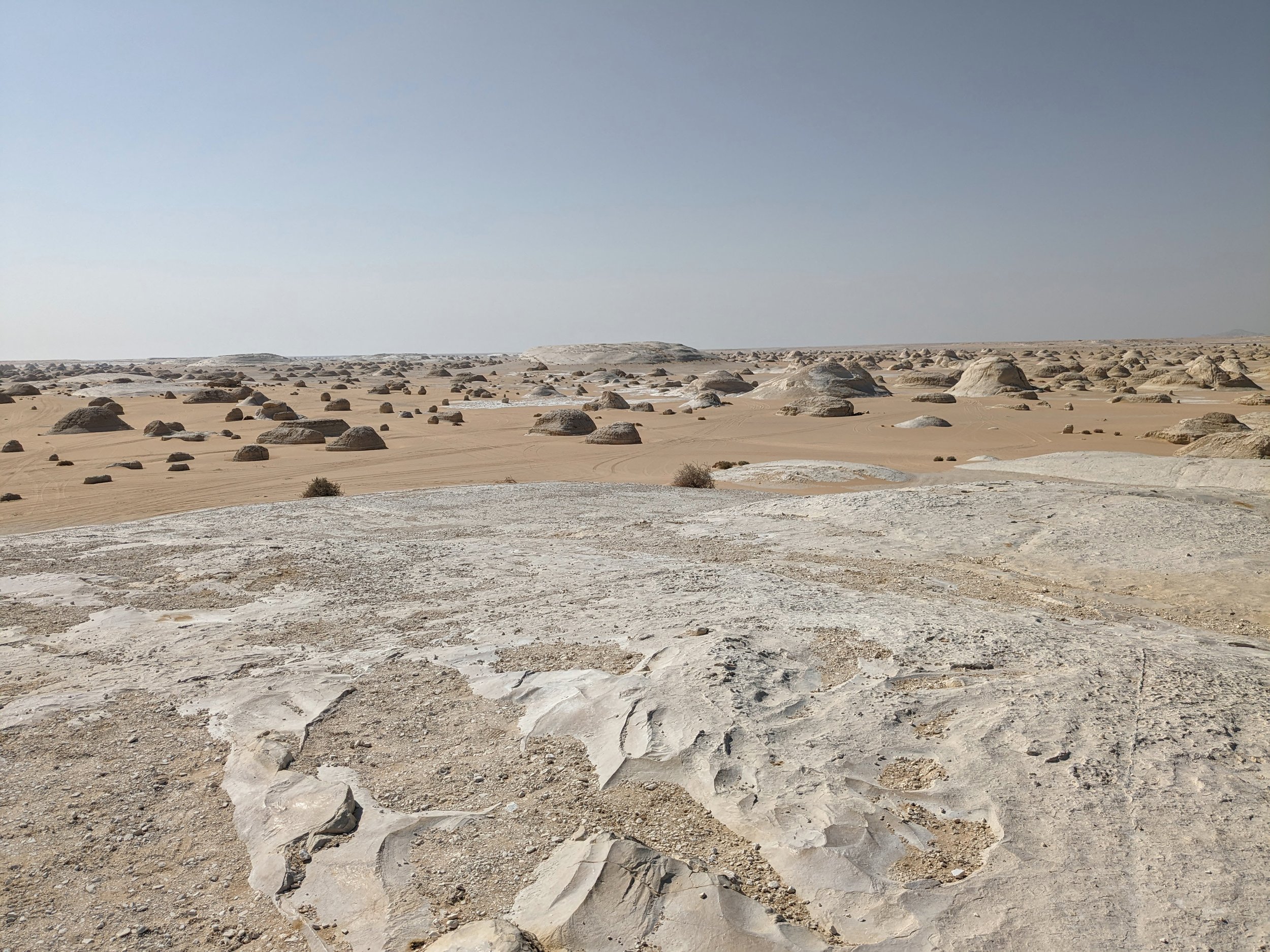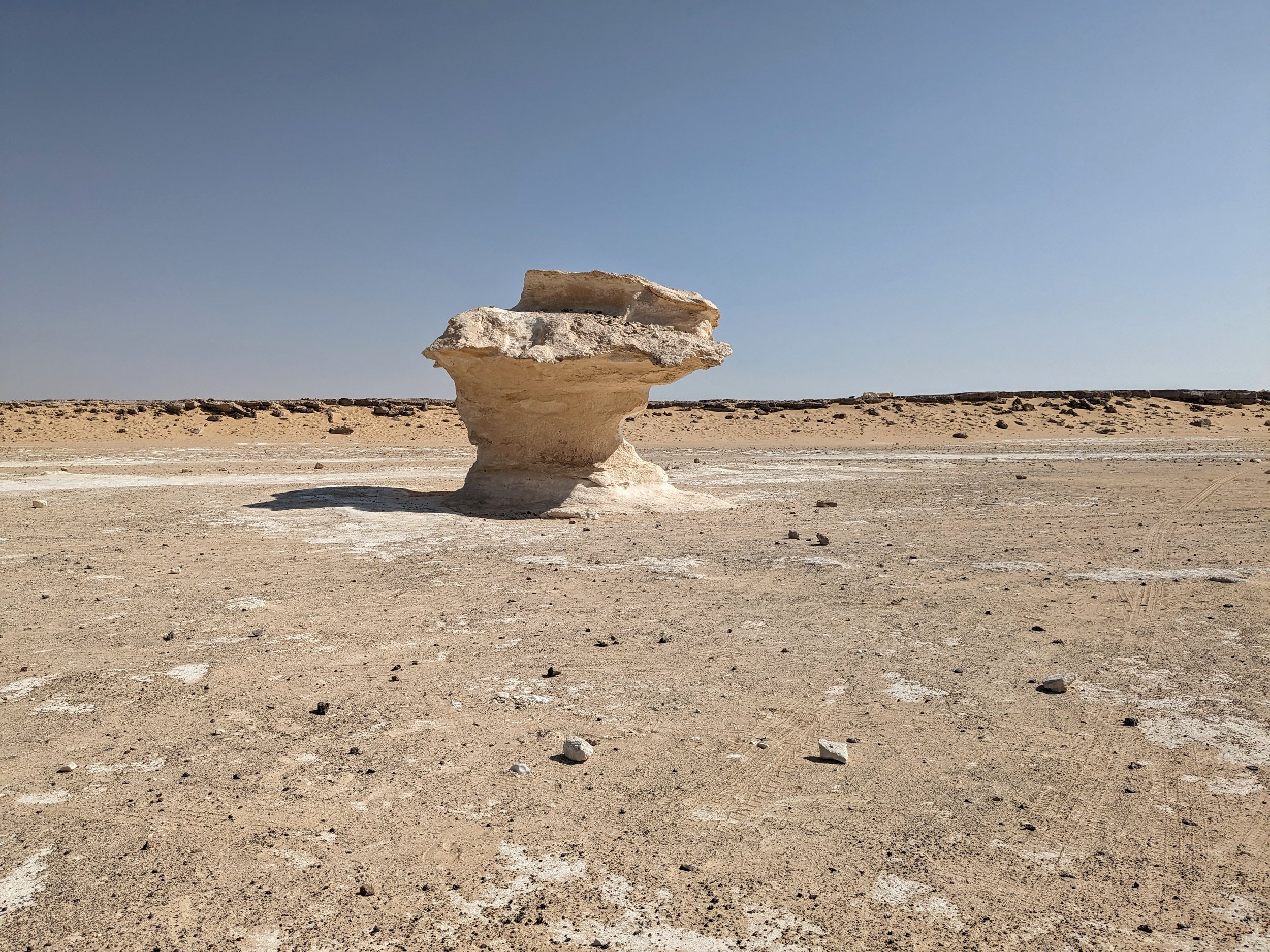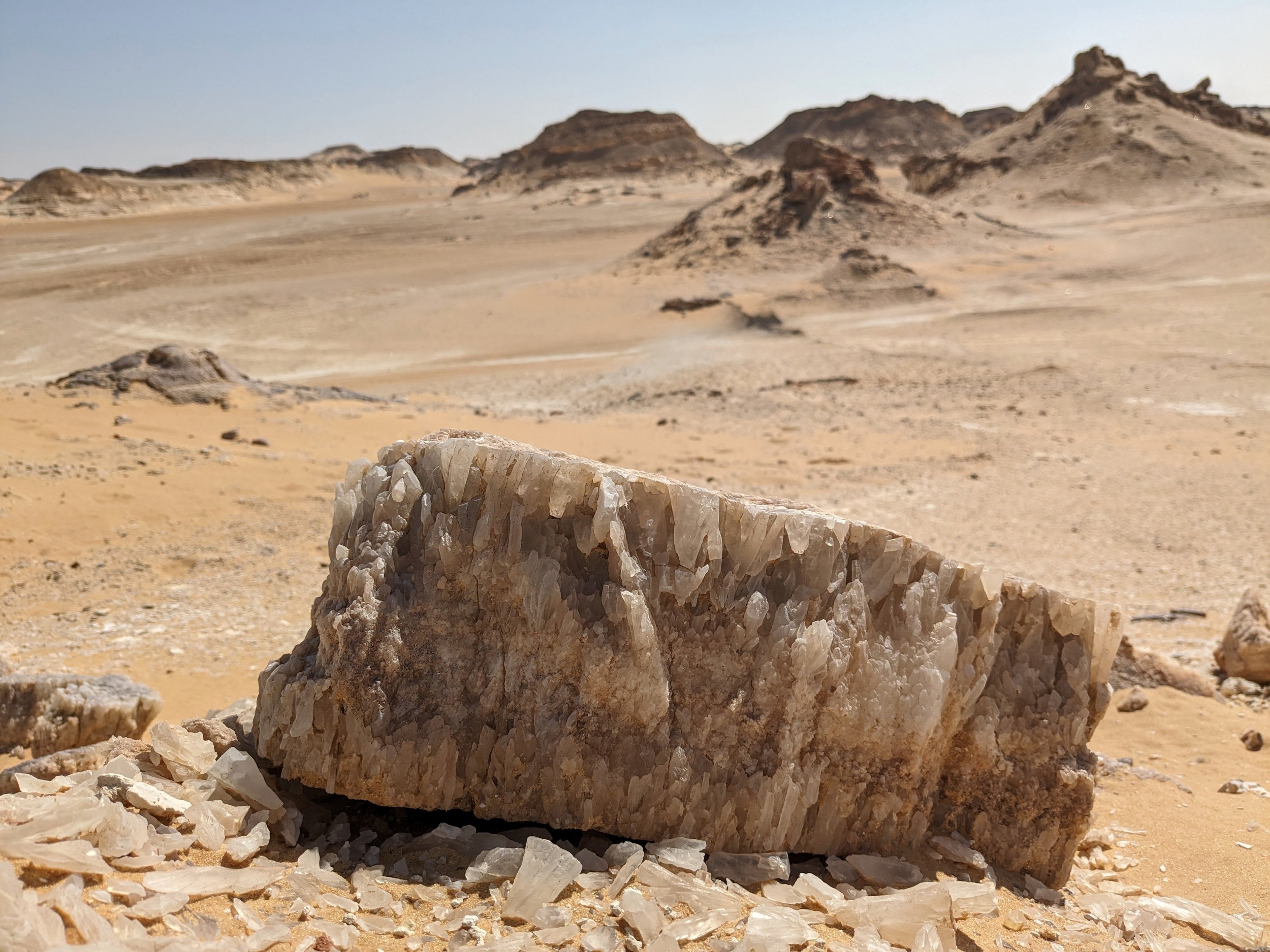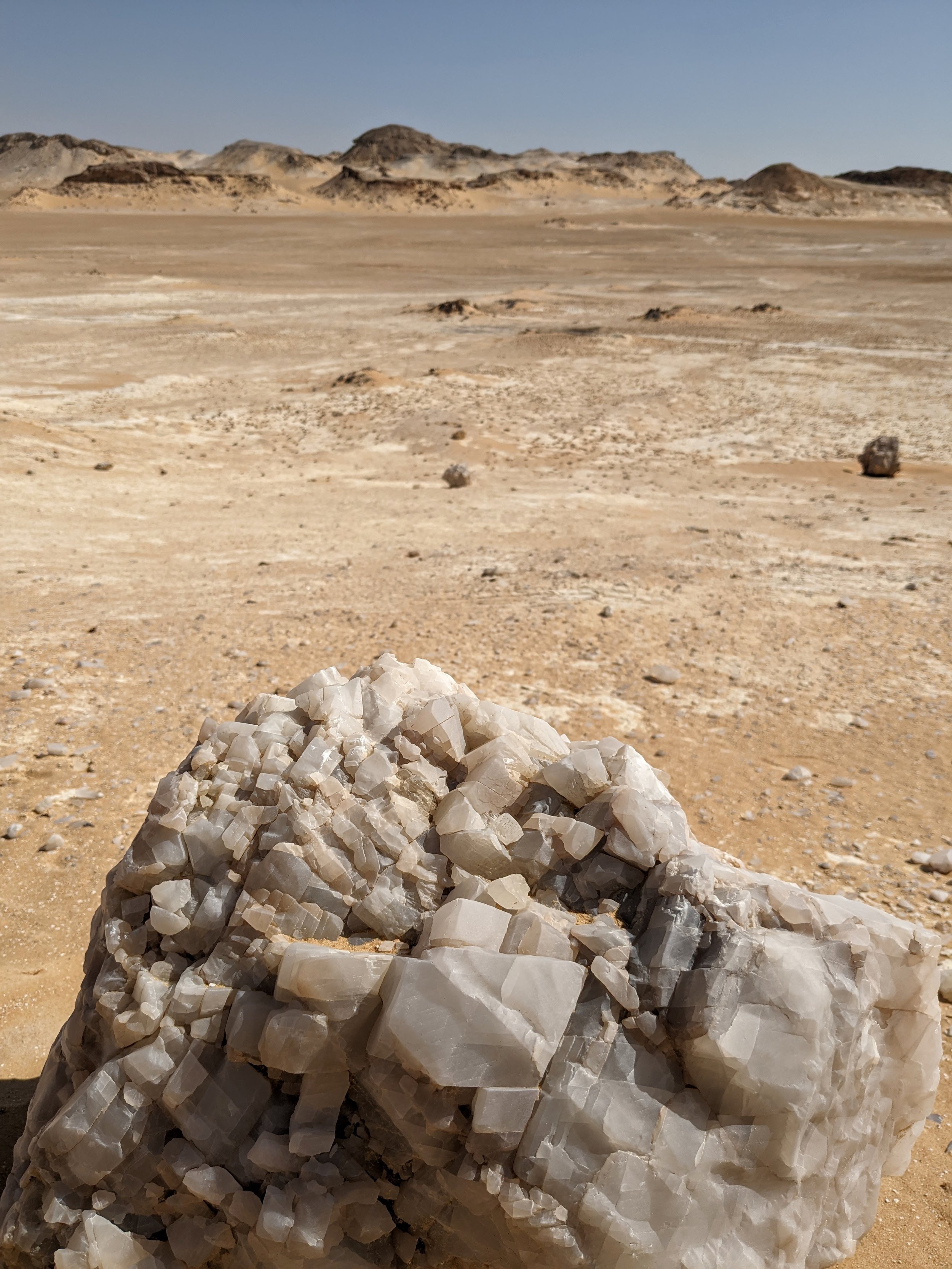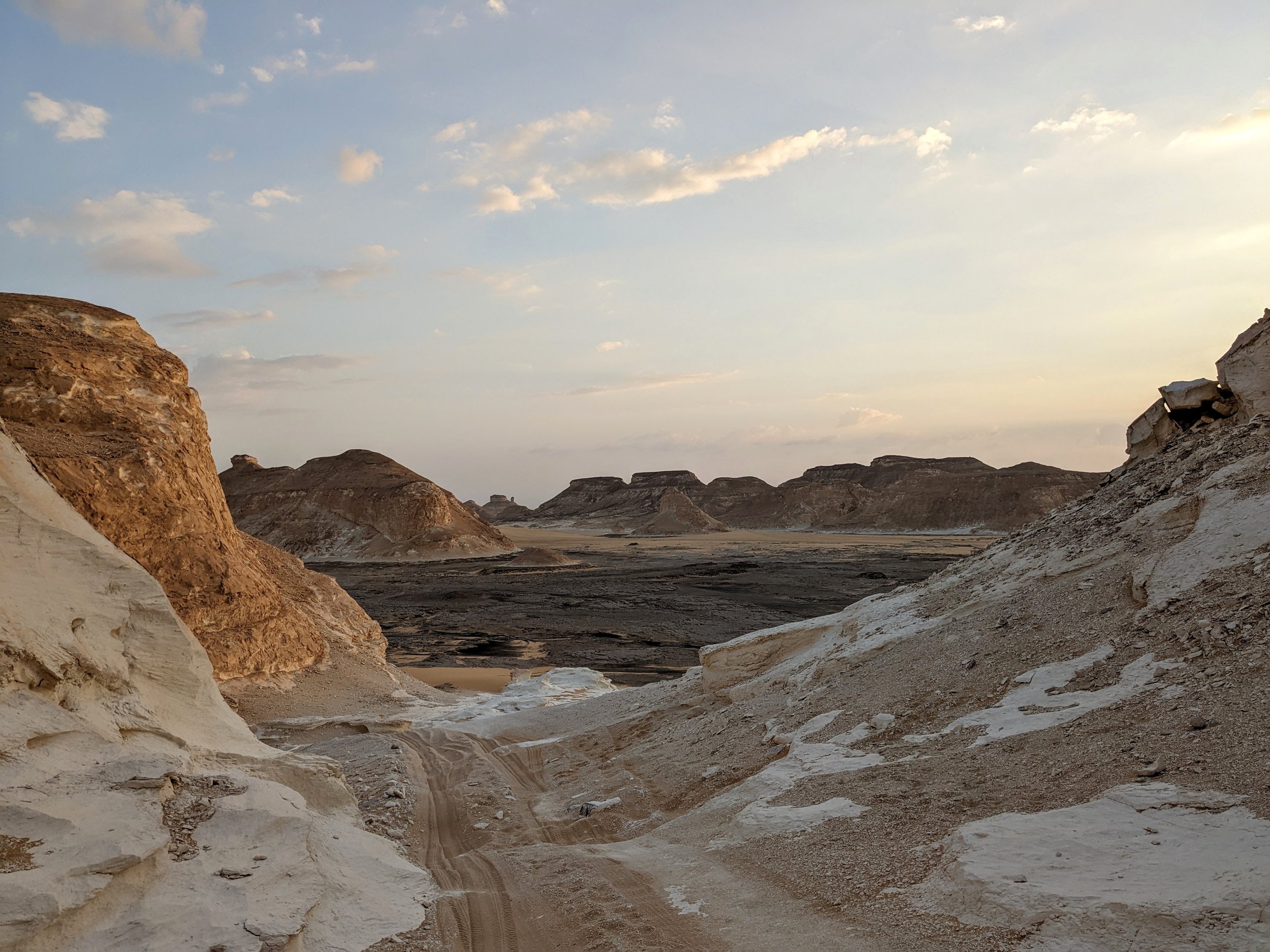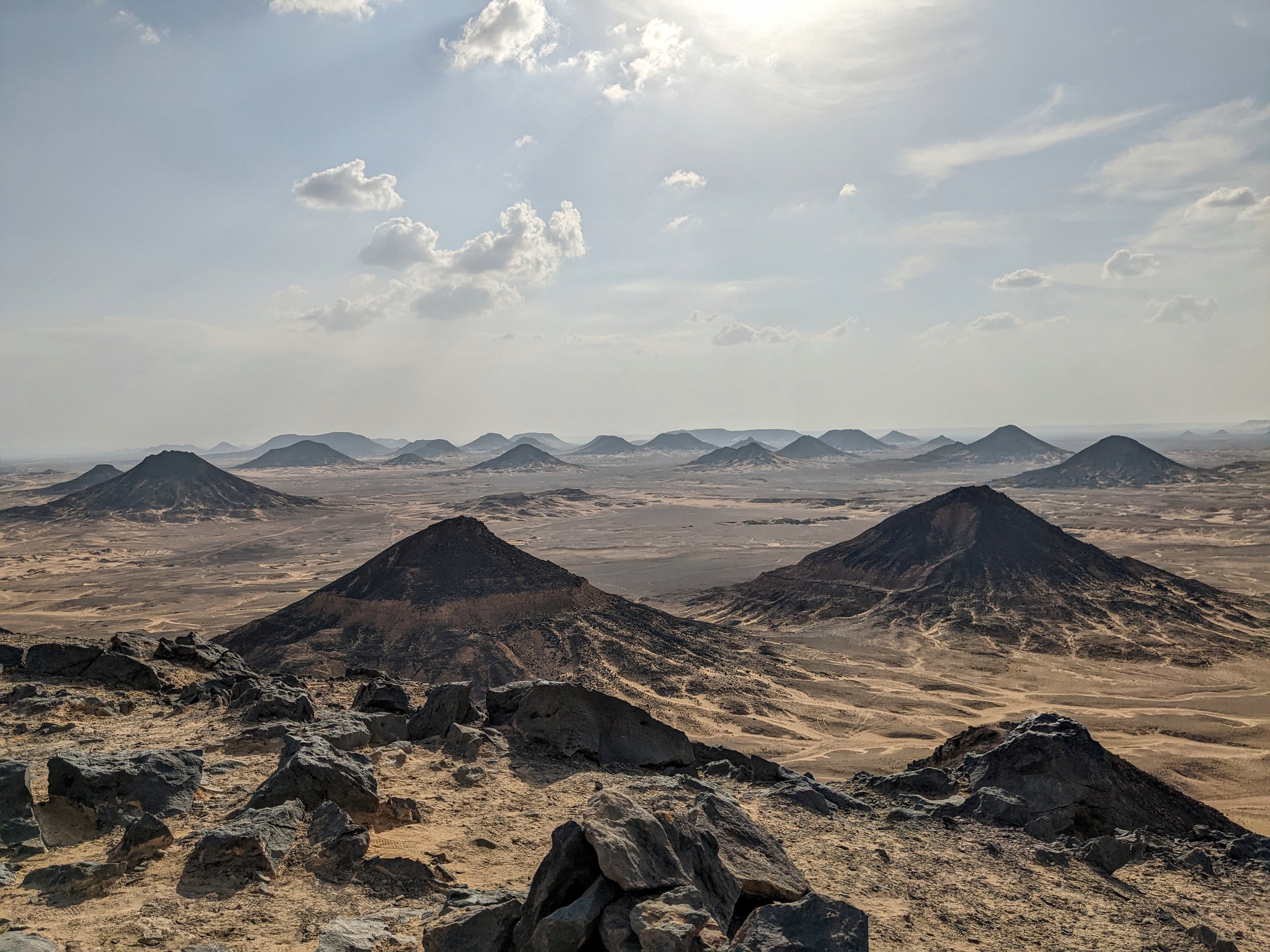white and black deserts
My dear friend,
Earlier this month, when Americans turned back their clocks an hour, the Egyptians left theirs alone. This means that I am now eight hours away from you, instead of seven. I complain about this to C., as I complained about it last year, and he tells me that it’s only an hour. What’s the big deal?
And I guess it isn’t a big deal, but it’s strange to feel that the distance between us has expanded by sixty minutes / thirty-six hundred seconds / or (approximately) forty-eight hundred heartbeats.
Pyramids as seen from the highway.
I’ve been thinking a lot about the strange ways in which time moves. Egypt tends to have that effect—it has something to do with how this crowded, teeming, wild, constantly-on-the-move city circulates around those five-thousand-year-old, silent, unmoving, watchful tombs. When we asked a guide recently if pharaohs’ palaces have ever been unearthed, he told us that earthly dwellings were built of mud bricks and other such temporary materials because life in this world is fleeting. It is the stone tombs and temples that remain because life in the next world is forever.
As ancient as the tombs and temples are, however, their history pales in comparison to the landscape in which they were erected: this vast desert which was, once upon a time, a sea.
I’ve mentioned to you, I think, the Valley of the Whales (Wadi el-Hitan): a stretch of desert southwest of Cairo that is littered with whale fossils. I’m thinking about writing something about this place—a novel, a novella, I’m not sure yet—and I’m still trying to wrap my head around the surreal experience of walking across a long-ago seabed beside long-dead whales, so I’ll have to tell you more about it some other time.
If you travel even further than the Valley of the Whales, you’ll eventually reach two breathtaking, otherworldly sections of the Sahara known as the Black Desert and the White Desert. Their distinctive geologic formations have been formed over tens of millions of years by now-extinct oceans and long-ago winds.
I wanted to see these places so much that I was willing to camp again! We found a fantastic desert guide located in the Bahariya Oasis who helped us arrange a night in a tent under the stars. You may be shocked to hear this, but I’ve turned into such an adventurer that when our guide asked which one of us wanted to ride over the dunes on the top of the Jeep, I was the first to volunteer.
The Black Desert is so-named for the basalt (rock formed from cooled lava) that caps the remains of ancient volcanoes.
Our first stop was at the base of one of these mounds. We scrambled up the side, stumbling over loose rocks, to reach a fantastic view at the summit.
Then we scrambled down again and set off along the highway.
After about forty-five minutes, we turned suddenly off the road and into the dunes. We cruised, roller-coaster-like, over the sand until we reached our first sighting of the wonderfully strange limestone formations that give the White Desert its name.
When we touched the rocks, our hands and clothes came away chalky.
No matter where we looked, the view was spectacular.
As the sun set, we perched on top of a dune while a couple friends went sandboarding. (I’ve been sandboarding enough times by now to know that I prefer to watch rather than to participate. The ride down is pleasant, but it’s not necessarily worth the difficult walk in shifting sand back up to the top.) The color of the limestone shifted from rose to gold to blue-gray.
Our camp for the night was, if possible, even more rustic than our camps in the Sinai. There may not have been any water source (or any toilet option, except for the empty spaces behind rocks), but the fire was warm…
… the food was plentiful….
… and we were so far from everyone and everything, beneath a sky so dark, that the stars overwhelmed us.
Since we’d arrived after the sun went down, we didn’t know what our surroundings looked like until the next morning.
From the photos, you’d think we’d landed in a dazzling, frosty, snow-capped landscape.
But these snowy hills are actually composed of limestone: sedimentary rock that begins to form in seas when the remains of shells and corals sink to the ocean floor, pile up, and slowly become compressed.
When the sea retreated from this area, it left behind the limestone that, once exposed to the elements, was carved and shaped and polished over millions of years by wind, weather, and sand.
Many of the formations in the desert have been named, as we might name clouds, according to what they look like: the ice cream cone, the rabbit, the chicken & mushroom. C. said that he wondered what people in the ancient world would have seen in these shapes, and I thought about the human urge to search for the familiar in the strange.
On the one hand, as I rested my palm against the crushed, compacted, and swirled bodies of sea urchins that swam through this desert one hundred million years ago, I found my earlier vexation over the hour-change of Daylight Savings embarrassingly trivial.
But on the other hand, the White Desert so strangely and so beautifully captures the interplay of time and space that I felt earlier, but could not effectively articulate. As the time between us expanded, the distance somehow did, too. This may not make logical sense, but to me it makes—well, let’s call it “desert sense.”
The limestone knows what I mean.
When we’d had our fill of sandy snowscapes, we began to make our way back to the oasis where a car was waiting to shuttle us to Cairo. En route, we stopped at Crystal Mountain to admire rocks of barite and calcite. We also found petrified wood, and limestone with fossils.
Our guide encouraged us to take a couple rocks. C. says we don’t have room in our luggage for my newfound collection, which—in addition to pieces from the western desert—includes finds from Lebanon and Jordan, as well as other parts of Egypt.
I’m hoping that the rocks will help me grasp the vast timeline laid bare in these deserts. So far, the scope and scale evade my understanding.
I’m worried that one of the challenges of setting a story in this desert is that, when confronted with such a massive amount of geological time, it’s hard to make a human lifetime, a human drama, feel—well, significant.
Yet I think I need to find a way to do it. Because who is going to read a plot about rocks?
Yours—L.



